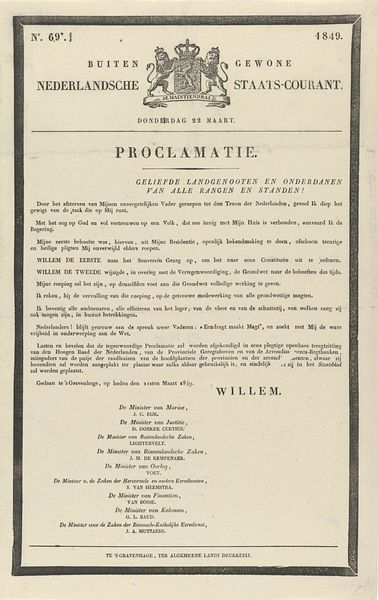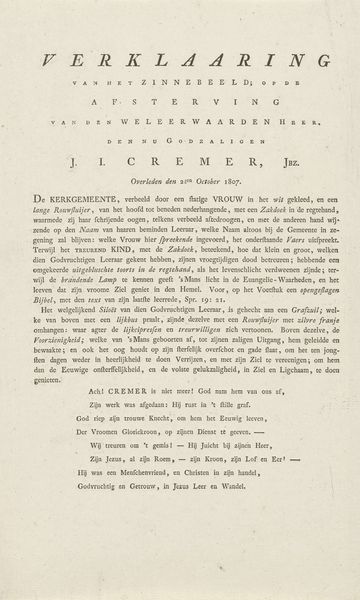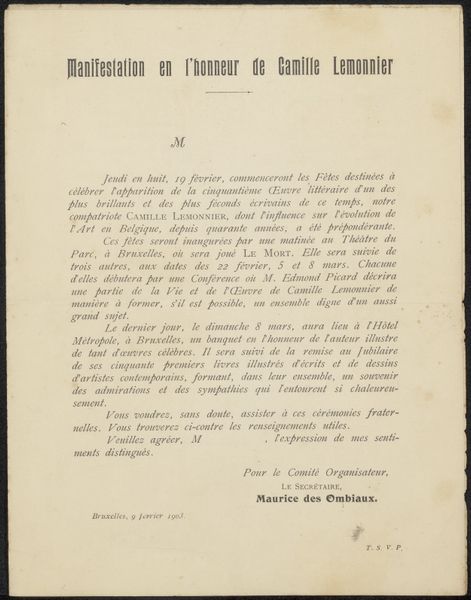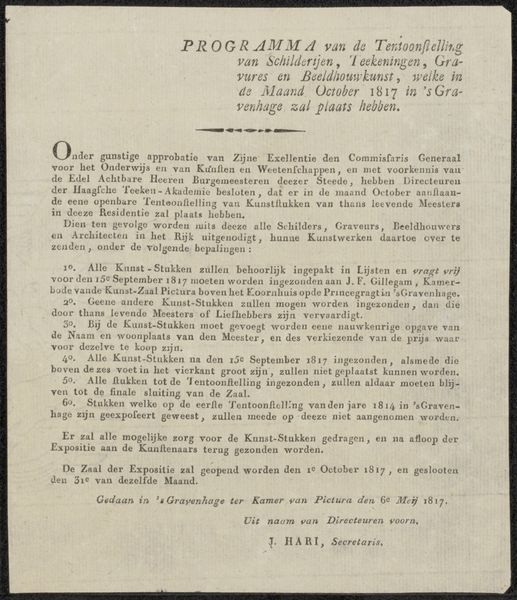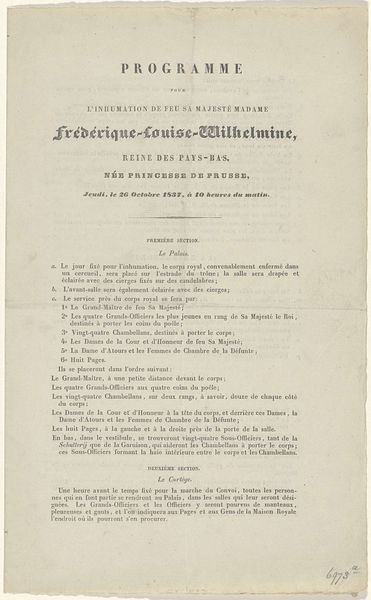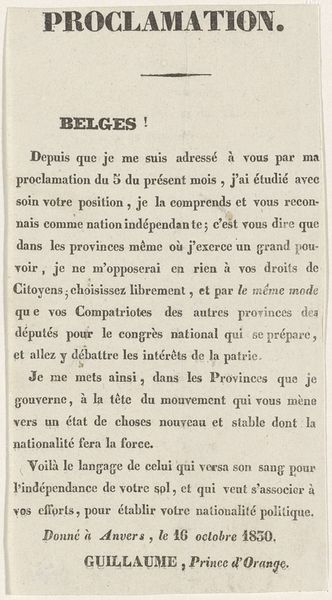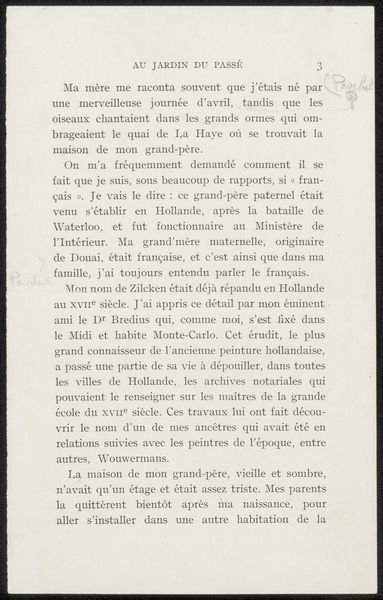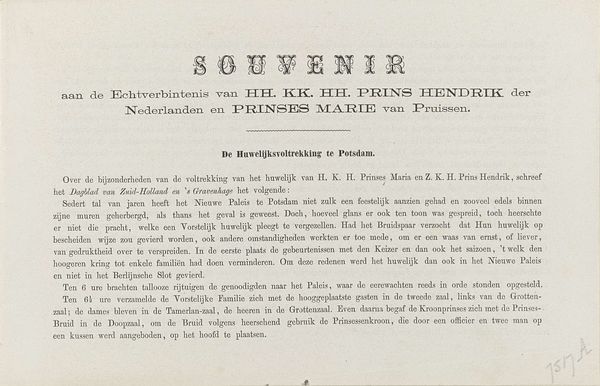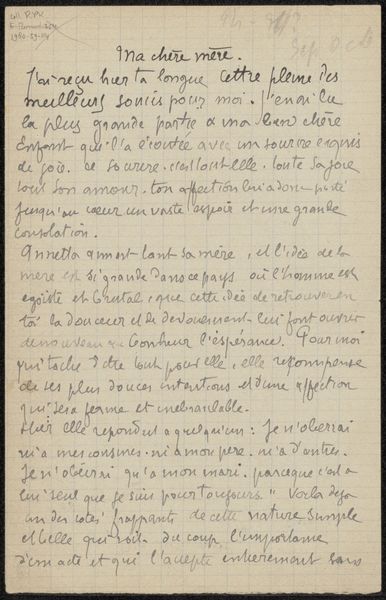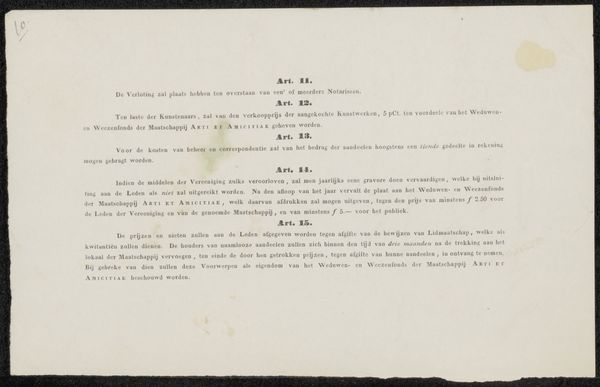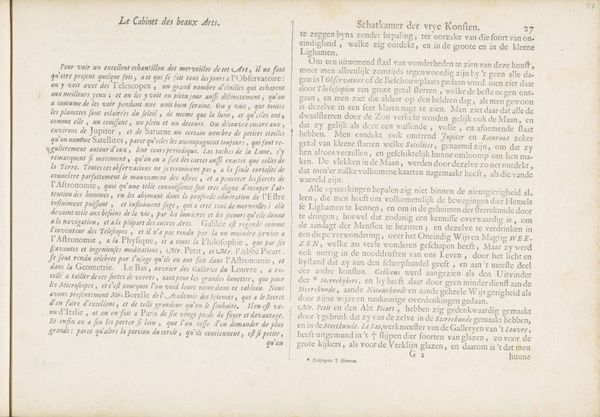
print, paper, typography
#
portrait
#
neoclacissism
# print
#
paper
#
typography
Dimensions: height 147 mm, width 186 mm
Copyright: Rijks Museum: Open Domain
Curator: This somber typographic print at the Rijksmuseum is titled "Proclamatie van de prins van Oranje, 1830", potentially dating to that very year. What stands out to you? Editor: My first thought is its unsettling tone. Even without understanding the languages, the layout feels almost accusatory, as if addressing a public grievance, amplified by the repetitive use of 'Proclamation.' The stark contrast between the dark lettering and faded paper further enhances its gravitas. Curator: Indeed. The text presents Prince William of Orange’s proclamation, addressing the people, or rather, the "Belges!" as it opens on the left, with a French translation opposite Dutch on the right. Considering this was printed in Antwerp, one has to recognize it against the backdrop of the Belgian Revolution also taking place in 1830. Editor: So, context is critical here, reading beyond its basic visual features, what would you say about it considering how it portrays nationalistic identity in this moment? Curator: From my perspective, the document aims to control a rapidly escalating situation through textual means. In 1830 the relationship between the Netherlands and the Southern provinces, what is now Belgium, was coming apart. He is appealing to a sense of shared nationhood while revolution brewed, even referencing sacrificing blood to establish "votre nationalité politique". Editor: It's fascinating how typography, a seemingly neutral medium, can be charged with such potent political energy. In terms of technique, what significance do you think the artist saw in it? Was this simply information being conveyed, or more? Curator: This particular artwork is a statement on power and perhaps propaganda, printed for wide circulation at a time of crisis. The text's neoclassical structure lends itself to a visual representation of an appeal of national unity. The placement in two languages also signifies an active negotiation, both inclusionary and exclusionary in one breath. Editor: Reflecting on our conversation, what started as an aged, typographic print reveals itself as a culturally charged relic from a key moment in Belgian and Dutch history. It is truly unsettling, indeed. Curator: Precisely, understanding the socio-political history is critical here: by unveiling its purpose and production, this otherwise quiet artwork becomes an active agent.
Comments
No comments
Be the first to comment and join the conversation on the ultimate creative platform.
